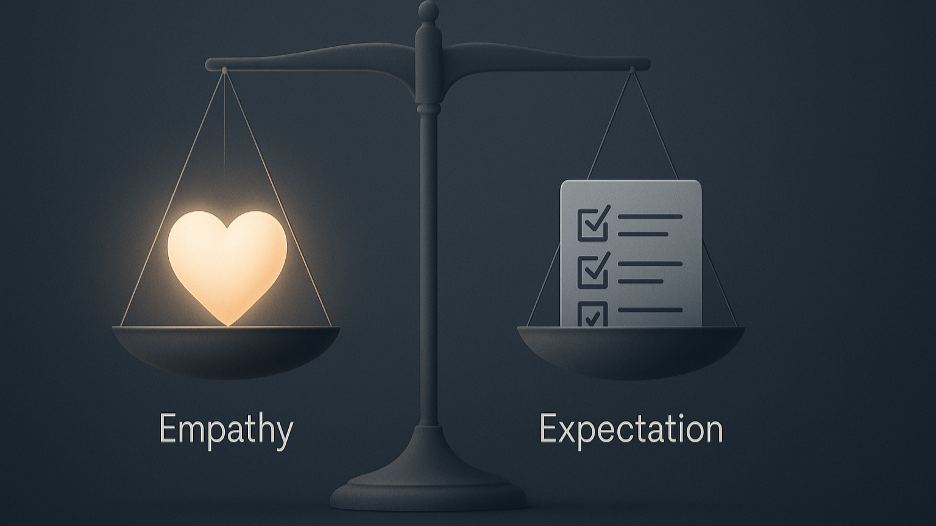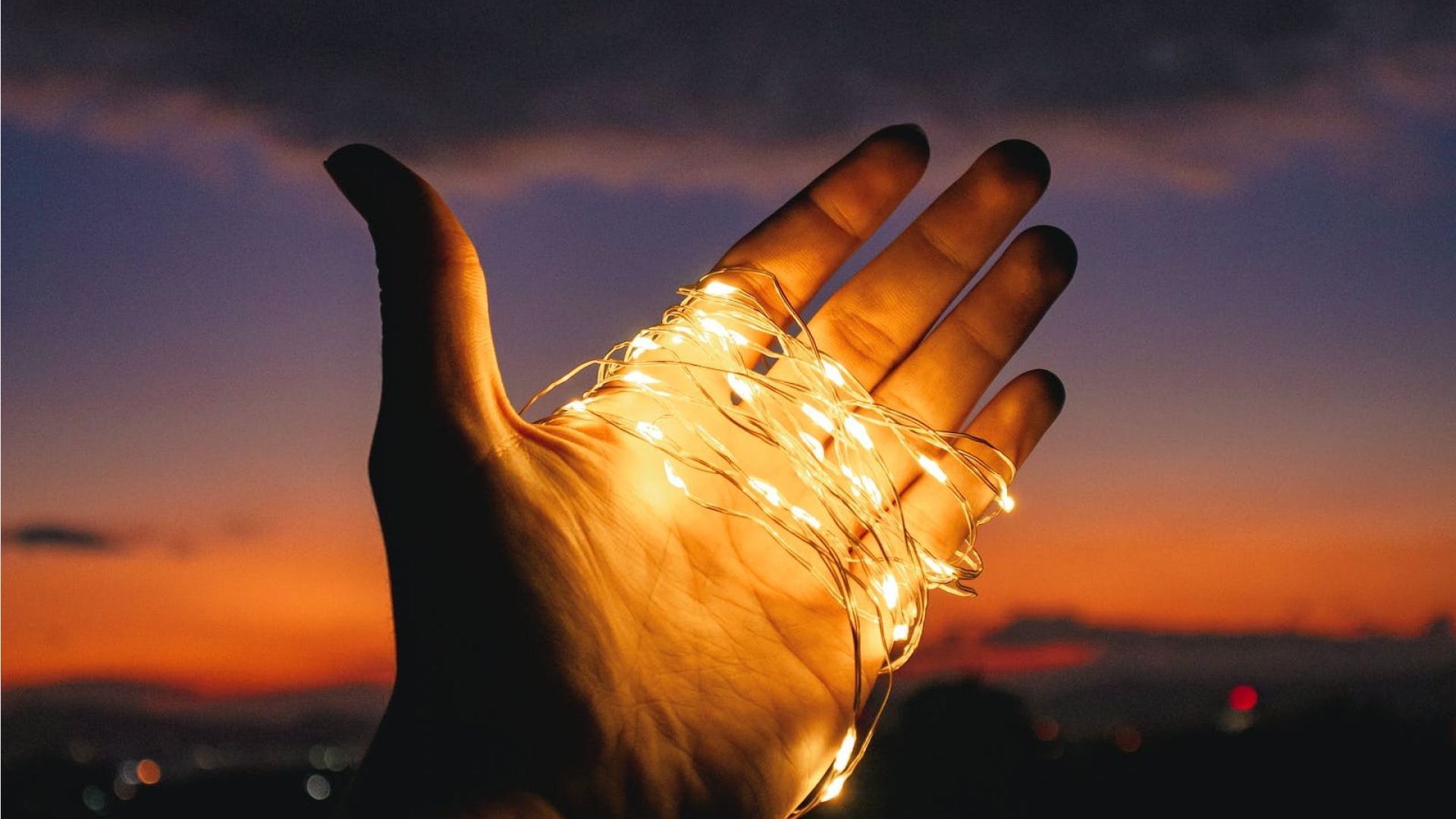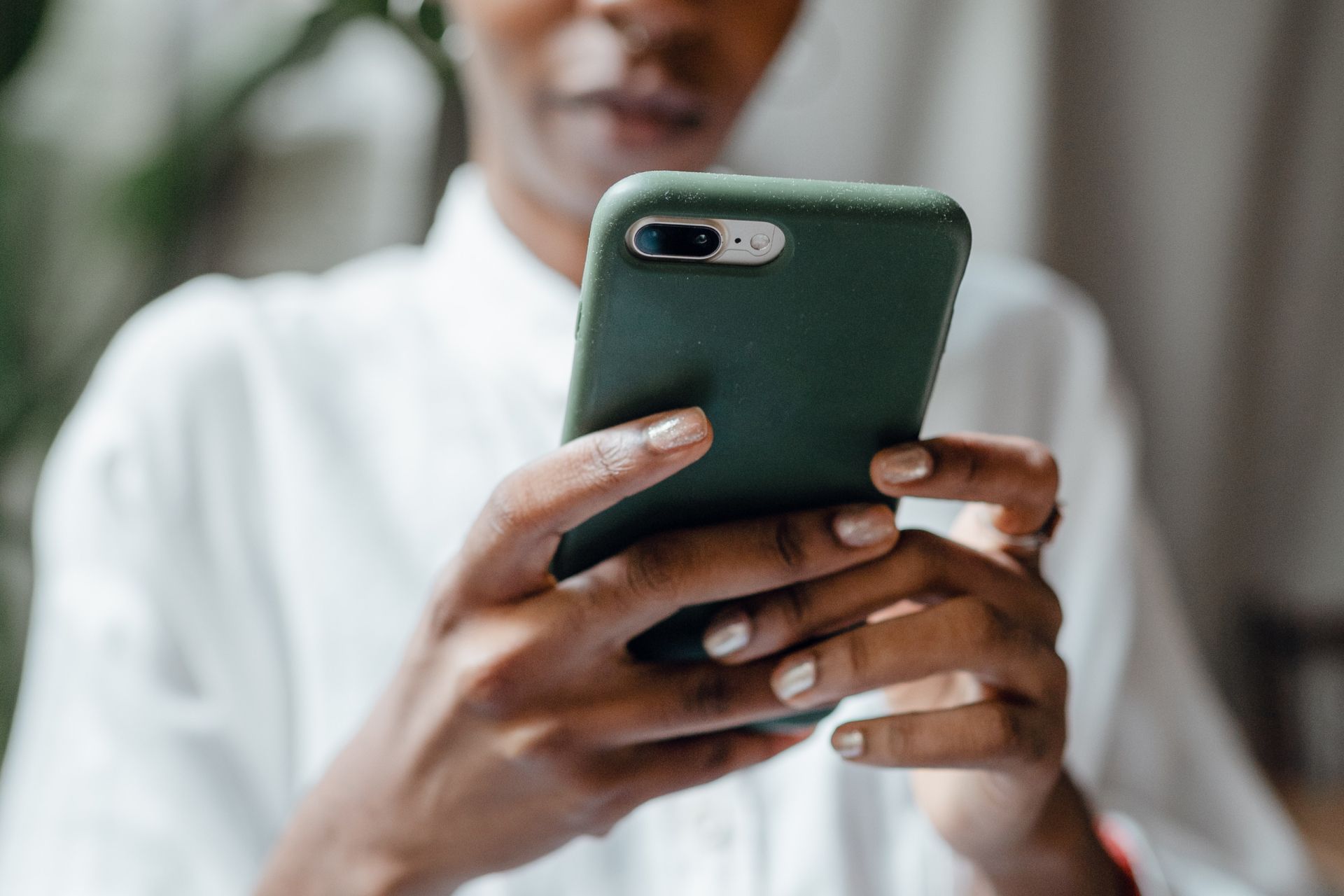Article
The Startup Growth Lifecycle: Re-inventing Leadership at Every Stage
October 13, 2024

Starting a company is exhilarating. The energy, passion, and creativity needed to get a startup off the ground are boundless, often resulting in rapid progress. But here’s the hard truth: what made you successful in the early days can sabotage you as you grow. There’s a breaking point—usually when your startup begins scaling—that demands a whole new approach.
Founders who fail to adapt often face disastrous outcomes. Think about how promising startups, like the infamous fall of Blackberry, once dominated their niche but crumbled under the weight of their own success because their founders were too fixated on early strategies and failed to scale. The tension is real, and many founders experience it but don’t know how to address it.
The Early Stages: A Playground for Mavericks
In the pre-seed and seed stages, founders are visionaries, hustling on every front. You’re wearing multiple hats—marketer, product designer, chief salesperson—and decision-making is quick and intuitive. These early days are defined by innovation, creativity, and the power of improvisation. Startups like Uber thrived in this environment, with Travis Kalanick’s adaptable, risk-taking leadership style playing a significant role in those formative stages.
But here’s the twist: as crucial as these qualities are, they become liabilities if not balanced as the company matures. Founders often fall into the trap of assuming that the instincts that helped them launch their company will also be their ticket to scaling. Spoiler: they won’t.
The Growth Stage: From Visionary to Strategist
As the startup enters the traction stage, the founder’s role begins to shift dramatically. This is where companies like Boo .com struggled, with Ernst Malmsten’s lavish spending and lack of focus on profitability spiraling into unchecked ambition and poor strategic management. Boo .com, a high-profile online fashion retailer that launched in the late 1990s, raised significant capital but ultimately failed due to a combination of factors, including overspending, a lack of focus on profitability, and an inability to adapt to the market's demands. This aligns with the challenges that startups often face during the growth stage, where they need to transition from a focus on innovation and customer acquisition to building sustainable systems and processes. Founders must pivot from being hands-on doers to becoming big-picture thinkers.
Key Challenge: Scaling isn’t just about adding people or increasing revenue—it’s about building systems that can handle growth.
Example: Consider a startup founder who once thrived by being decisive and intuitive. Suddenly, those same strengths become weaknesses. At this stage, data-driven decision-making, clear objectives, and team alignment become more important than gut instinct. At fab .com for example, the founder initially assumed that a flash-sales model for designer goods was enough. Fab .com's initial success was based on a niche market strategy, but as it expanded, it faced challenges in managing inventory, maintaining customer satisfaction, and adapting to the changing e-commerce landscape. This example highlights the importance of data-driven decision-making, clear objectives, and team alignment during the growth stage. It wasn’t until later, with customer feedback and market validation, that they realized the need for a much broader platform. This critical pivot fueled their continued growth.
You can no longer make decisions in isolation. Founders who don't delegate or rely on the insights of their growing teams are bottlenecking their own companies. In the early days, this might have worked, but in the traction phase, failure to delegate and empower others can crush a startup’s momentum.
Scaling Stage: Collaborative Leadership and Risk Management
As your startup moves into the expansion stage, you’re no longer a scrappy underdog; you’re playing in the big leagues. But here’s where many founders get stuck. Scaling is about efficiency, consistency, and letting go of control.
Key Challenge: Founders must move from solo decision-makers to collaborative leaders. While in the early days, your strength lay in your ability to do everything yourself, this will no longer cut it. The shift from risk-taker to risk-manager becomes critical. Founders need to balance their instinct for innovation with a more calculated, process-driven approach. The introduction of processes, governance structures, and professional management becomes essential to avoid burnout and chaos.
Consider Zynga under Mark Pincus: initially, his aggressive, growth-at-all-costs mentality helped the company conquer markets globally. However, as Zynga grew, that same aggressive attitude led to internal cultural issues, regulatory challenges, and reputational damage. This illustrates the need for founders to transition from risk-takers to risk-managers during the scaling stage and to balance their instinct for innovation with a more calculated, process-driven approach. The inability to transition from a disruptive force to a company with proper checks and balances left Zynga in need of an overhaul.
Founders who thrive at this stage are those who not only manage risk but also develop emotional intelligence. Successful founders become socially astute, supporting their teams, creating a positive culture, and understanding that leadership isn’t just about driving results but also about fostering a thriving environment for long-term success.
Continuous Growth: The Leadership Evolution
At the continuous growth stage, startups that survive are those with founders who have fully evolved their leadership styles. You’re no longer in the business of product launches and rapid pivots but rather in sustaining growth, profitability, and strategic differentiation. Your new job is governance, and the decisions you make today must focus on long-term sustainability. This is where companies like Yahoo! struggled, with Jerry Yang's inability to adapt to the changing landscape of the internet industry and his failure to embrace the rise of social media and mobile led to the company's downfall.
Key Challenge: Long-term planning and vision become more important than short-term wins. Founders must transition into CEOs who set the tone for culture, governance, and sustainable growth. This often involves a collaborative decision-making style, focusing on bringing diverse perspectives together to fuel innovation while avoiding stagnation.
Here’s where many companies fail: the founder remains overly attached to the “startup hustle.” This is no longer the place for it. Founders must shift from inspirational figures to developers of talent. Leadership is now about making your people successful, not just driving product success.
What’s at Stake? If you fail to adapt, your startup won’t just stall—it could implode. Take the case of Pets .com, where Julie Wainwright, unwilling to let go of her early vision and failing to adapt to the realities of the pet supply industry and scaling, steered the company into disaster. In contrast, those who successfully pivot at each stage—from visionary to strategist to risk manager and mentor—will lead their startups to sustained success.
Success in the early stages of a startup often reinforces behaviors that can be destructive as the company scales. What got you here won’t get you there.
Are You Ready to Evolve? So, ask yourself: Are you ready to let go of what made you a successful founder to become the strategic leader your startup needs? Are you willing to delegate, build systems, and adapt your leadership style as your company grows? If not, you may find yourself standing in the way of your own success. The future of your startup depends on it. It’s time to rethink your approach to leadership—before it’s too late.
Founders who fail to adapt often face disastrous outcomes. Think about how promising startups, like the infamous fall of Blackberry, once dominated their niche but crumbled under the weight of their own success because their founders were too fixated on early strategies and failed to scale. The tension is real, and many founders experience it but don’t know how to address it.
The Early Stages: A Playground for Mavericks
In the pre-seed and seed stages, founders are visionaries, hustling on every front. You’re wearing multiple hats—marketer, product designer, chief salesperson—and decision-making is quick and intuitive. These early days are defined by innovation, creativity, and the power of improvisation. Startups like Uber thrived in this environment, with Travis Kalanick’s adaptable, risk-taking leadership style playing a significant role in those formative stages.
But here’s the twist: as crucial as these qualities are, they become liabilities if not balanced as the company matures. Founders often fall into the trap of assuming that the instincts that helped them launch their company will also be their ticket to scaling. Spoiler: they won’t.
The Growth Stage: From Visionary to Strategist
As the startup enters the traction stage, the founder’s role begins to shift dramatically. This is where companies like Boo .com struggled, with Ernst Malmsten’s lavish spending and lack of focus on profitability spiraling into unchecked ambition and poor strategic management. Boo .com, a high-profile online fashion retailer that launched in the late 1990s, raised significant capital but ultimately failed due to a combination of factors, including overspending, a lack of focus on profitability, and an inability to adapt to the market's demands. This aligns with the challenges that startups often face during the growth stage, where they need to transition from a focus on innovation and customer acquisition to building sustainable systems and processes. Founders must pivot from being hands-on doers to becoming big-picture thinkers.
Key Challenge: Scaling isn’t just about adding people or increasing revenue—it’s about building systems that can handle growth.
Example: Consider a startup founder who once thrived by being decisive and intuitive. Suddenly, those same strengths become weaknesses. At this stage, data-driven decision-making, clear objectives, and team alignment become more important than gut instinct. At fab .com for example, the founder initially assumed that a flash-sales model for designer goods was enough. Fab .com's initial success was based on a niche market strategy, but as it expanded, it faced challenges in managing inventory, maintaining customer satisfaction, and adapting to the changing e-commerce landscape. This example highlights the importance of data-driven decision-making, clear objectives, and team alignment during the growth stage. It wasn’t until later, with customer feedback and market validation, that they realized the need for a much broader platform. This critical pivot fueled their continued growth.
You can no longer make decisions in isolation. Founders who don't delegate or rely on the insights of their growing teams are bottlenecking their own companies. In the early days, this might have worked, but in the traction phase, failure to delegate and empower others can crush a startup’s momentum.
Scaling Stage: Collaborative Leadership and Risk Management
As your startup moves into the expansion stage, you’re no longer a scrappy underdog; you’re playing in the big leagues. But here’s where many founders get stuck. Scaling is about efficiency, consistency, and letting go of control.
Key Challenge: Founders must move from solo decision-makers to collaborative leaders. While in the early days, your strength lay in your ability to do everything yourself, this will no longer cut it. The shift from risk-taker to risk-manager becomes critical. Founders need to balance their instinct for innovation with a more calculated, process-driven approach. The introduction of processes, governance structures, and professional management becomes essential to avoid burnout and chaos.
Consider Zynga under Mark Pincus: initially, his aggressive, growth-at-all-costs mentality helped the company conquer markets globally. However, as Zynga grew, that same aggressive attitude led to internal cultural issues, regulatory challenges, and reputational damage. This illustrates the need for founders to transition from risk-takers to risk-managers during the scaling stage and to balance their instinct for innovation with a more calculated, process-driven approach. The inability to transition from a disruptive force to a company with proper checks and balances left Zynga in need of an overhaul.
Founders who thrive at this stage are those who not only manage risk but also develop emotional intelligence. Successful founders become socially astute, supporting their teams, creating a positive culture, and understanding that leadership isn’t just about driving results but also about fostering a thriving environment for long-term success.
Continuous Growth: The Leadership Evolution
At the continuous growth stage, startups that survive are those with founders who have fully evolved their leadership styles. You’re no longer in the business of product launches and rapid pivots but rather in sustaining growth, profitability, and strategic differentiation. Your new job is governance, and the decisions you make today must focus on long-term sustainability. This is where companies like Yahoo! struggled, with Jerry Yang's inability to adapt to the changing landscape of the internet industry and his failure to embrace the rise of social media and mobile led to the company's downfall.
Key Challenge: Long-term planning and vision become more important than short-term wins. Founders must transition into CEOs who set the tone for culture, governance, and sustainable growth. This often involves a collaborative decision-making style, focusing on bringing diverse perspectives together to fuel innovation while avoiding stagnation.
Here’s where many companies fail: the founder remains overly attached to the “startup hustle.” This is no longer the place for it. Founders must shift from inspirational figures to developers of talent. Leadership is now about making your people successful, not just driving product success.
What’s at Stake? If you fail to adapt, your startup won’t just stall—it could implode. Take the case of Pets .com, where Julie Wainwright, unwilling to let go of her early vision and failing to adapt to the realities of the pet supply industry and scaling, steered the company into disaster. In contrast, those who successfully pivot at each stage—from visionary to strategist to risk manager and mentor—will lead their startups to sustained success.
Success in the early stages of a startup often reinforces behaviors that can be destructive as the company scales. What got you here won’t get you there.
Are You Ready to Evolve? So, ask yourself: Are you ready to let go of what made you a successful founder to become the strategic leader your startup needs? Are you willing to delegate, build systems, and adapt your leadership style as your company grows? If not, you may find yourself standing in the way of your own success. The future of your startup depends on it. It’s time to rethink your approach to leadership—before it’s too late.
share this
Related Articles
Related Articles

The Nicest Boss in the World He was adored. He remembered birthdays, checked in on people’s families, and stayed late helping fix slides no one asked him to touch. His team called him “the best boss we’ve ever had.” He was also running on fumes. Behind the warm smile was a leader quietly burning out — drowning in everyone else’s problems, too empathetic for his own good. If you’re a leader who prides yourself on caring deeply, this might sting a little: empathy, taken too far, becomes control in disguise. Empathy’s Secret Shadow Empathy is essential for leadership. It builds loyalty, safety, and trust. But the same trait that makes people feel seen can also make them dependent. When you can’t tolerate someone else’s discomfort, you start protecting them from it. You step in to fix, to soothe, to rescue. It looks noble. It feels generous. But it quietly steals agency — theirs and yours. Your team stops growing because you’re doing their emotional labor. You stop leading because you’re managing feelings instead of outcomes. That’s the hidden cost of care. The Emotional Guilt Loop Over-empathetic leaders live in a constant tug-of-war between compassion and guilt. They think: “They’re already stretched — I can’t pile more on.” “If I push harder, I’ll seem uncaring.” “I’ll just do it myself; it’s easier.” Sound familiar? That’s not empathy anymore. That’s guilt masquerading as kindness. And guilt makes terrible business decisions. Because guilt doesn’t guide you toward what’s right. It just steers you away from what feels uncomfortable. A Founder’s Story One founder I coached, let’s call her Lina, led with heart. She built her company around “people first.” And she meant it. But somewhere along the way, “people first” turned into “me last.” She couldn’t say no. She kept saving underperformers, approving vacations during crunch time, rewriting others’ work to spare them stress. Her team adored her — until they didn’t. Because beneath her helpfulness was quiet resentment. And resentment always leaks. The breakthrough came when she realized something simple but hard: “I was protecting people from learning the hard parts of growth.” That’s when she started leading again instead of parenting. When Caring Becomes Control Here’s the paradox: the more you care, the more you risk over-controlling. You jump in to fix not because you don’t trust them, but because you feel for them. It’s empathy turned inward — I can’t stand watching them struggle. But leadership isn’t about eliminating discomfort. It’s about using it wisely. People grow by stretching, not by being spared. When you save someone from every failure, you’re also saving them from competence. The Biology of Burnout Chronic empathy triggers chronic stress. When you absorb other people’s emotions all day, your nervous system never gets a break. You start mirroring everyone’s anxiety like an emotional amplifier. Your brain thinks you’re in crisis — even when you’re not. That’s why over-caring leaders are often the first to burn out. Their compassion becomes constant cortisol. The irony? The leaders who want to create safety for others end up unsafe themselves. How to Care Without Carrying Feel, then filter. It’s okay to feel someone’s frustration. Just don’t keep it. Ask: “Is this mine to hold?” Help through accountability. Say, “I know this is tough, and I also need you to take ownership.” The and matters. Let discomfort be developmental. When a team member struggles, resist rescuing. Stay present, not protective. Coach before you comfort. Instead of “Don’t worry,” try, “What do you think your next move is?” Reframe empathy as empowerment. Caring isn’t about absorbing pain; it’s about believing people can handle it. Funny but True One exec I worked with told me, “Every time I stop helping, I feel like a jerk.” I said, “No — you feel like a leader. It just takes a while to tell the difference.” He laughed and said, “So… you’re telling me leadership feels bad at first?” I said, “Exactly. Growth always does.” The Cultural Ripple Effect When leaders overfunction, teams underfunction. When leaders hold space instead of taking space, teams rise. Empathy should expand others, not consume you. The healthiest cultures balance care and candor — support and stretch. They normalize struggle as part of the process instead of something to be hidden or rescued. That’s what real compassion looks like in motion. The Maturity of Tough Empathy Empathy without boundaries is exhaustion. Empathy with boundaries is wisdom. The mature version of empathy doesn’t say, “I’ll protect you.” It says, “I believe you can handle this — and I’ll walk beside you while you do.” That’s not cold. That’s developmental. Your Challenge This Week Notice where you’re rescuing someone instead of coaching them. Pause before you step in. Ask yourself, Am I helping because they need it — or because I need to feel helpful? Then take one small risk: let them handle it. They’ll probably surprise you. And you’ll feel lighter than you have in months. Final Word Caring is beautiful. It’s what makes you human. But unchecked empathy turns leaders into emotional pack mules — carrying what was never theirs to bear. Real leadership is still full of heart. It just remembers that compassion without accountability isn’t love. It’s fear. And the moment you stop rescuing everyone, you finally start freeing them — and yourself.s)

The Smart Leader’s Blind Spot It’s strange how often the smartest people make the worst decisions under pressure. They don’t lose IQ. They lose perspective. I’ve seen this happen more times than I can count. A sharp, decisive executive starts second-guessing every move. They overanalyze, overwork, and overcontrol — all in the name of being “thorough.” They think they’re being rational. But underneath the spreadsheets and meetings is something far less logical. It’s fear. The Fear That Doesn’t Look Like Fear We think of fear as panic — sweating, shaking, obvious. But most leadership fear hides behind competence. It shows up as perfectionism, busyness, overcommitment, indecision. It sounds like, “Let’s get more data.” “Let’s not rush this.” “Let’s keep this one close.” That’s not analysis. That’s avoidance with a better vocabulary. When fear runs the show, the goal subtly shifts from making the right decision to avoiding the wrong one. And those two things are worlds apart. The Cost of Fear-Based Leadership When leaders operate from fear, everything tightens. They stop listening. They rush to defend. They play small when the company needs boldness. They keep people who are loyal over people who are competent — because loyalty feels safer. And here’s the real tragedy: the team starts copying the fear. They become cautious, compliant, quiet. Pretty soon, no one’s leading anymore. They’re all managing risk — mostly emotional risk. A CEO’s Moment of Truth One CEO I coached — brilliant, confident, deeply human — was terrified of being wrong in front of his board. He masked it well. On the outside: decisive. Inside: a constant hum of anxiety. After a tough quarter, he admitted, “I realized half my decisions weren’t based on strategy — they were based on protecting my image.” That moment of honesty was the start of his maturity curve. Once he could name the fear, it stopped running his show. He didn’t become fearless. He became aware. And awareness is what turns reaction into wisdom. Why Fear Feels Safer Than Clarity Fear has a strange way of convincing us it’s caution. Caution whispers, “Slow down and look.” Fear screams, “Don’t move.” The first sharpens judgment. The second paralyzes it. And the more we listen to fear, the more it disguises itself as prudence. That’s why emotional maturity isn’t about suppressing fear. It’s about being able to say, “Ah, that’s fear talking — not fact.” How Fear Distorts the Mind Here’s what happens when fear hijacks leadership: Tunnel vision: You fixate on the immediate threat and forget the big picture. Confirmation bias: You start looking for data that validates your anxiety. Short-termism: You make safe decisions that feel good now and cause pain later. Blame shifting: You protect your ego by pushing ownership outward. The mind gets smaller. The leader gets reactive. The company gets stuck. The Maturity Shift Emotional maturity isn’t about being unshakable. It’s about staying curious in the presence of fear. Mature leaders don’t pretend they’re fearless. They just don’t let fear make the decisions. They pause, breathe, and ask, “What part of this is data, and what part is my insecurity talking?” That single question can change everything. A Founder’s Story A founder I worked with once said, “I’m not afraid — I just have high standards.” But as we unpacked it, he realized those “high standards” were actually a way to control outcomes. He feared disappointment — his own and others’. When he finally stopped trying to protect his reputation and started protecting his clarity, his decisions got faster and cleaner. The business didn’t just grow — it started breathing again. Because when you stop trying to look right, you finally have room to be right. Funny, But True I once asked a CEO what he’d do differently if he weren’t afraid of failing. He said, “Probably the same things I’m doing now — just with less Advil.” That’s the thing: most leaders already know what to do. Fear just makes it hurt more. How to Lead Without Fear (Even When It’s There) Name it early. The sooner you recognize fear, the less power it has. Ask yourself, “What’s the story fear’s telling me right now?” Reframe mistakes as tuition. You’ll still pay for errors — might as well learn something from them. Separate identity from outcome. A bad decision doesn’t mean a bad leader. It means a leader who’s still learning — like everyone else. Keep one truth-teller nearby. Someone who loves you enough to tell you when you’re acting from ego. Practice micro-bravery. Tell one hard truth a day. Say “I don’t know” once a week. Let discomfort become strength training. The Paradox of Fear Fear doesn’t make you weak. It means you care. But if you never face it, it becomes your compass — and it always points backward. Courage, maturity, clarity — they’re not opposites of fear. They’re what happen when you stop running from it. Your Challenge This Week Next time you feel that knot in your stomach — before a board meeting, a tough conversation, a high-stakes call — pause. Ask yourself: What am I afraid might happen? Then ask: What might happen if I act from clarity instead of fear? That’s not therapy. That’s leadership hygiene. Final Word The mark of maturity isn’t fearlessness. It’s self-awareness. You can’t control your fear. But you can choose whether it sits in the driver’s seat or the passenger’s. Great leaders don’t wait for fear to disappear. They lead with it beside them — quietly, respectfully — but never in charge.

The Charisma Illusion Charisma gets all the press. It fills conference rooms, wins funding rounds, and dominates the LinkedIn highlight reel. We treat it like the gold standard of leadership — as if volume equals vision. But charisma is a sugar high. It spikes energy, then crashes trust. Composure, on the other hand — quiet, grounded, centered composure — is the kind of influence that lasts. It doesn’t light up a room; it settles one. When things go sideways, it’s not the charismatic leader people look for. It’s the calm one. The Crisis Test Picture this. The product just failed. The client’s furious. Your team’s pacing like trapped cats. Two leaders walk in. One storms into action — loud, fast, “What the hell happened here?” The other walks in slowly, looks around, and says, “Okay, let’s breathe. What do we know so far?” The first one gets attention. The second one gets results. That’s emotional geometry — the calmest person in the room reshapes everyone else’s state. Why Calm Is the Real Power When you stay composed, you’re not just managing your emotions — you’re regulating the entire system. Here’s the neuroscience behind it: people mirror the nervous system of whoever has the most authority. If you’re grounded, they sync to your rhythm. If you’re frantic, they sync to that instead. You don’t need to lecture anyone on resilience. You just have to model it. It’s not charisma that makes people trust you; it’s the quiet sense that you’re not going to lose your mind when things get hard. Charisma’s Half-Life Charisma is a spark. It can ignite a team — but if there’s no composure beneath it, the whole thing burns out. You’ve seen this movie before: the leader who rallies everyone with a passionate all-hands speech, then disappears into reaction mode when things get messy. Charisma without composure is like caffeine without sleep. You’re awake, but you’re not steady. Composure doesn’t get the applause. It gets the loyalty. A Founder’s Story One founder I worked with — I’ll call him David — was known for being a “high-voltage” guy. He could pitch an investor, fire up a crowd, or talk anyone into anything. But his team? They were walking on eggshells. His energy filled every room, but it left no oxygen for anyone else. During one session, I asked, “When you raise your voice, what happens to theirs?” He went quiet. That was the moment he understood that his passion — the thing he was most proud of — had become the team’s anxiety. A year later, his team described him differently: “He’s still intense, but steady. We trust him more now.” He didn’t lose charisma; he layered it with composure. The Calm Before the Influence Here’s what composure actually looks like: You listen longer. Because real influence starts with attention, not argument. You breathe before reacting. That pause isn’t weakness; it’s power management. You let silence do the work. Charisma fills every space; composure creates space for others to step in. You own your tone. You realize your sighs, your speed, your face — they’re all communication tools whether you intend them or not. You choose steadiness over certainty. People don’t need you to know everything. They just need to know you’re okay not knowing. Funny But True A client once told me, “When I’m calm in a meeting, people assume I’m hiding something.” I said, “Good. Let them wonder.” That’s how unfamiliar calm has become. In some cultures, composure looks radical — even suspicious. But it’s exactly what people crave in a world that never shuts up. Why Charisma Is Easier (and More Addictive) Charisma gets feedback. You see the energy rise, you feel the applause. It’s visible. Composure feels invisible — until you lose it. No one thanks you for staying calm during a crisis. But they remember it when deciding whether to follow you into the next one. That’s why maturity in leadership means getting comfortable with the quiet wins — the meeting that didn’t spiral, the argument that didn’t happen, the team that stayed focused because you did. The Emotional Geometry in Practice Think of composure as geometry because emotions move through space. When you enter a room, you alter its emotional shape. If you radiate calm, people’s shoulders drop. Their thinking widens. They start contributing. If you radiate stress, the room contracts. People shrink. Ideas vanish. Influence isn’t what you say. It’s the energy field you create. Your Challenge This Week Before your next high-stakes meeting, pause outside the door. Take one deep breath and ask yourself: What energy does this room need from me right now? Then bring only that. Nothing more. You’ll be amazed how fast everything slows down when you do. Final Word Charisma captures attention. Composure builds trust. One is about how loudly you shine; the other is about how steadily you glow. The leader who can stay centered when everyone else is spinning doesn’t just have influence — they are the influence. And that’s the kind of power that never burns out.
STAY UP TO DATE
GET PATH'S LATEST
Receive bi-weekly updates from the church, and get a heads up on upcoming events.
Contact Us








